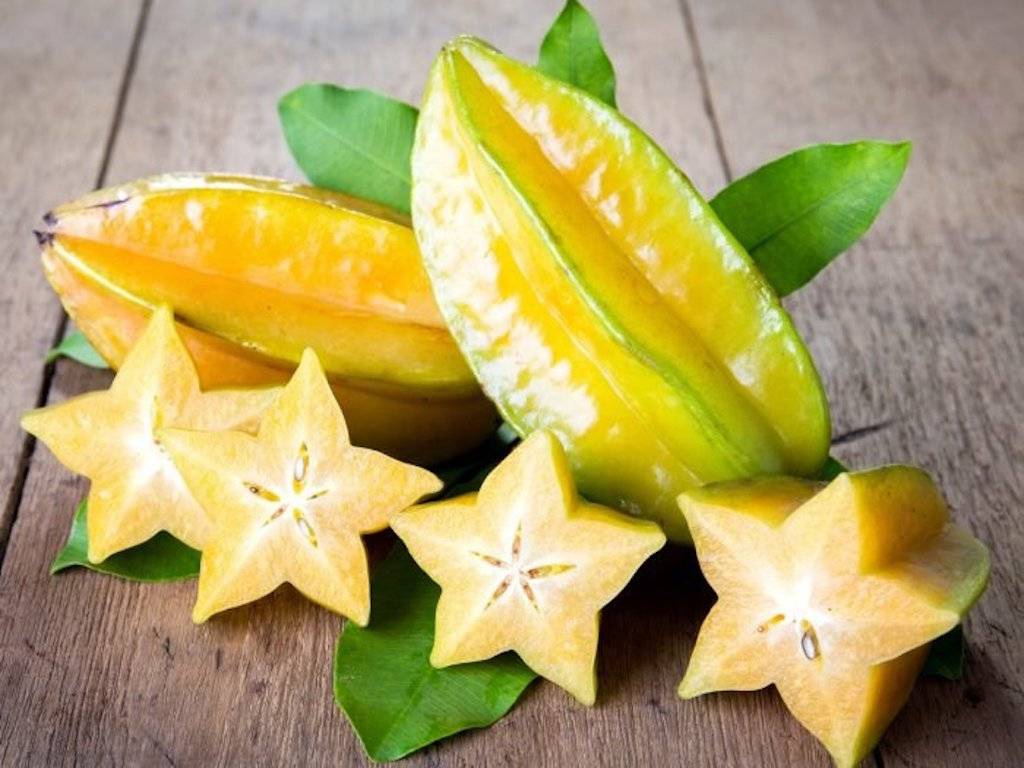
In a large multi-stretched tree with dim green branches, Star Fruit, also called the Carambola, grows. A tree of star fruits can grow up to 30 feet long, and reach a width of about 25 feet, while keeping the tree smaller in scale. Star Fruit has a long harvesting time and the fruit emerges from June. Since it shaped like a star, its name was called "Star Fruit." A thoroughly established tree can reliably yield up to 100 to 200 kilograms of star fruit.
Star Fruit has many advantages for your well-being. Vitamin C, B9, B6, B2 and fibre are abundant for the Star Fruit. It requires many minerals, including zinc, phosphorus and potassium.
Star Fruit Cultivation in a Crate:
There are about 10 to 12 seeds in each Star Fruit. First of all, buy from the market some star fruits. Cut the fruit and take all the seeds carefully without destroying them at this stage. If the seeds are cut, fill the cups partly with soil from the seeds and wet with warm water afterwards. Subsequently plant it in a crate.
Soil Condition:
Star Fruits embraces a wide variety of textures of the soil. It is good for your vine, as long as the soil channels off excess moisture. Loamy soil is ideal for planting with a reasonable quantity of organic matter. For optimum growth, pH levels should be between acidic and neutral. Aim to have a pH of 4.5 to 7.
Requirements for Temperature:
The best way to grow star fruits is to totally sunshine conditions. Furthermore, the atmosphere is hot and humid and must be kept free from the frost. Anything less than 35 degrees will be more risky and below 25 degrees will lead to death.
Propagation Methods:
By Way of Seeds:
In the soggy peat moss, put the fruit seeds. When the seeds begin to spring, the plants should be moved to sandy loam-soil containers. Proper treatment guarantees their longevity and seed distribution will yield variable effects. While it is also not the best-loved propagation technique for business trees, it is probably the right way to grow a tree from locally acquired fruit seeds for home landscapers.
By Way of Cuttings:
Cut off branches that have buds at an angle for propagation through cuttings. Subsequently placed them in a rooting chemical and into a constant soil-covered polythene. Make sure the cuttings are watered and roots grow over time.
By Way of Air Layering:
It involves damaging one branch of a tree and then allowing the root to expand. Start by selecting a 60 cm long branch. From the tips of the branch, make two equal cuts between 30 and 60 cm around the branch. The slices should be roughly 2.5 to 3 cm apart. Eliminate from the branch the ring of bark and cambium. Using a clammy slab of peat moss to cover the entire area and seal it tightly with a sheet of plastic. To preserve moisture and stop light, cover the plastic with aluminium foil. Cut it under the two new roots at the point where the branch of Star Fruit is rooted all over. Remove the wrap carefully and plant the new tree on loam soil.
Watering Conditions:
Constant watering is needed for star fruit plants and the soil must be moist. Deep watering, once or twice a week, is required. Reduce the watering of the plant during winters, as it does not need a lot of water. Depending on health, a star plant can tolerate flooding of water for 2 days to 10 days.
Pruning Conditions:
The branches that are 3 feet long must be trimmed within the first two years in order to facilitate lateral development. Trimming, when the growth is inactive, is favoured during the winter season. For efficient harvesting, fully mature trees need to be kept under 6 to 12 feet.
Fertilizer Provision:
For a fully grown tree, fertiliser needs vary from 4 to 6 times per year, and for young plants, fertiliser must be used during the year every 30 to 60 days. Try to use a 6-2-6 or 6-4-6 hybrid fertiliser and it should also contain manganese, magnesium, zinc and iron.
Control of Pests and Disease:
Plumose scales (Morganella longispina) and philaphedra scales are attached to leaves and twigs (Philephedra tuberculosa). Brown scales, on the other hand, strike fruits (Coccus hesperidum). To keep the pest away, horticultural oil spray will help.
To avoid the diaprepes weevil (Diaprepes abbreviatus) and Myctides imberbis, both affecting the roots, pyrethrin should be used. Pyrethrin is ideal for squash bugs and insecticidal soap is good for avoiding stink bugs. Within the berries, both forms of bug cause small holes.
Cercospora Averrhoa, Gloesporium sp, Corynespora cassiicola, Phomopsis sp and Phyllosticta sp. are fungal leaf spot diseases. It is not that risky, but it should be taken care of. Algal rust that contributes to grey or red circular patches appearing on the bark is caused by Cephaleuros virescens. For help, contact your local agricultural office.
Anthracnose fruit rotting is followed by spotting on the anthracnose leaf. Using bio fungicide or copper fungicide spray to treat it the same way. Remove the fruit from the tree when a fruit gets infected.
When the star fruit tree remains in an extreme wet soil state, pythium fungi occur. Remove the excess water and humidity from the tree first. Currently, no treatment is available for the disease and the only remedy is prevention.
Harvesting:
Once the grooves inside the edges are yellow and the top part is orange, harvesting of a star fruit tree can be initiated. When harvesting is finished, it contributes to a lower self-life when the whole fruit becomes yellow in colour.

















